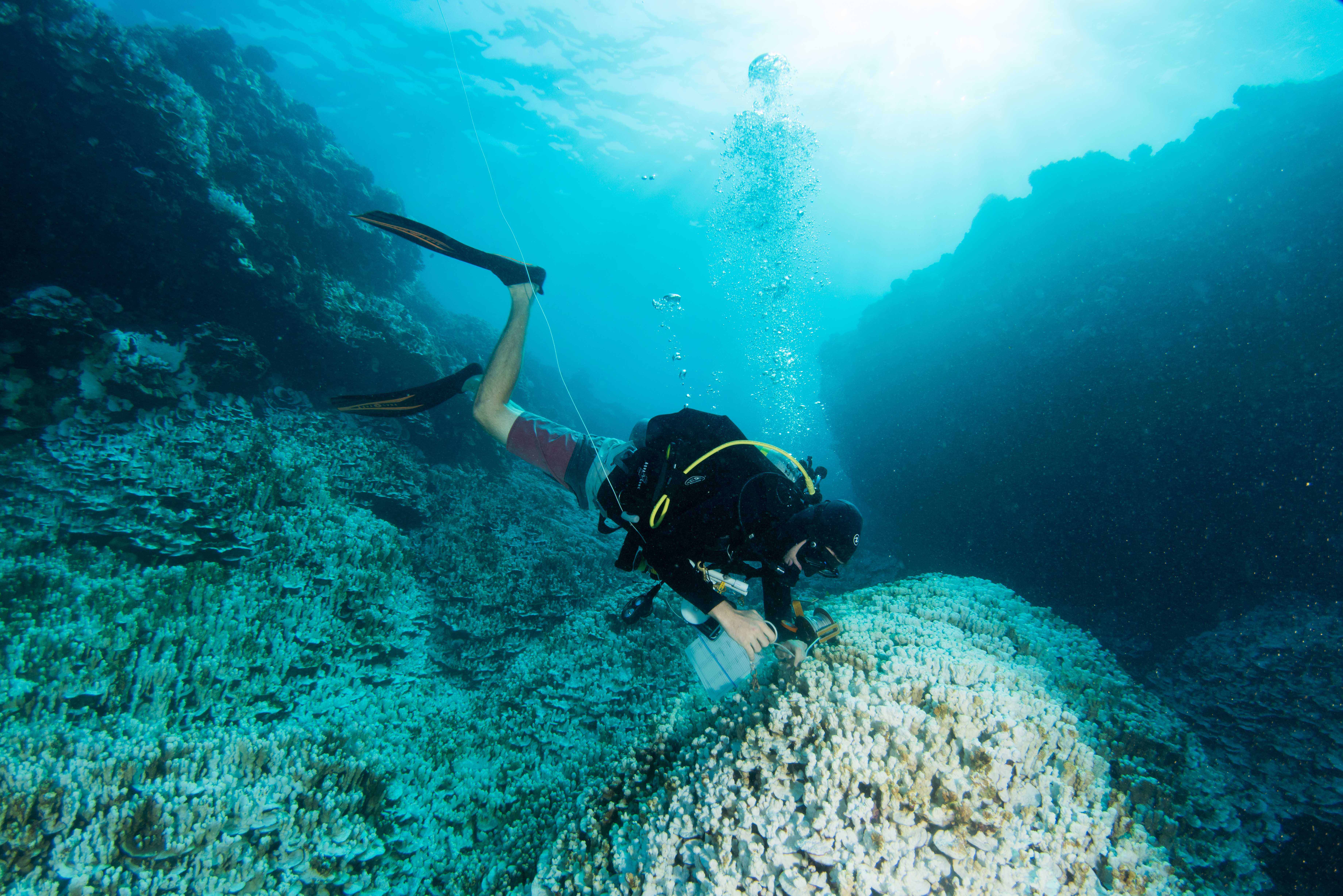Global Survey Leads to Hawai‘i Coral Bleaching Recovery Plan
After two summers of serious coral bleaching in waters around the main Hawaiian Islands and in the Northwestern Hawaiian Islands, the first-ever Hawai‘i Coral Bleaching Recovery Plan has been developed.
“Recent bleaching events in Hawai‘i are a major cause for concern, as coral reefs provide the foundation for most of our nearshore marine life,” said DLNR Division of Aquatics administrator Dr. Bruce Anderson. “Following these two bleaching events, approximately 50% or more of the corals in certain impacted areas died. We can expect an increase in both the severity and frequency of bleaching events as sea water temperatures rise in the future,” said Anderson.
“This is world-wide crisis. From a practical standpoint, we can’t do much about global warming, or the sea water temperature rise that is undoubtedly linked to global warming. However, we need to do what we can to help reefs recover from bleaching events and to try to make our reefs more resilient,” said Anderson.
To identify and evaluate management strategies, a steering committee, made up of representatives from DLNR/DAR, the University of Hawai‘i, The Nature Conservancy, and the National Oceanic and Atmospheric Administration, analyzed hundreds of peer-reviewed articles related to coral bleaching and recovery.
They also surveyed scientists and resource managers from countries around the world that are experiencing bleaching to find out what they are doing and what works and doesn’t work. The committee then held a workshop with Hawai‘i-based coral researchers and ocean resource managers who ranked management strategies that would likely be most appropriate and effective in Hawai‘i.
Out of over twenty management strategies considered, those that ranked the highest involved the creation of a network of well-designed fisheries management areas with a focus on herbivore management. “Limiting or prohibiting the take of fish that eat algae, such as parrotfish, is particularly important. These fish help to prevent the overgrowth of algae on corals, as the algae prevents coral polyps from settling on hard surfaces and growing after a bleaching event,” said Anderson. Also high on the ranking of management actions is reducing sediment and polluted runoff that stresses coral reefs and may inhibit recovery.
Planting sea urchins and corals found to be resistant to bleaching were also determined to be potentially effective management strategies. Prohibiting the collection of aquarium fish ranked relatively low on the list of management strategies. Most aquarium fish are not herbivores and they represent a very small proportion of the biomass taken daily by commercial and non-commercial fishermen.
“We set out to identify specific and practical management measures to mitigate the effects of coral bleaching, and we accomplished this in the plan. Now we need to implement it, and it is not a one-size-fits-all situation. Management strategies need to be tailored to the most important stressors in the specific area where bleaching is a problem. For example, an effective strategy for West Hawai‘i may be very different than for Kaneohe Bay,” said Anderson.
The report recommended focusing management measures on West Hawai‘i, Leeward Maui, Kaneohe Bay, and North Kaua‘i.
“These are areas where bleaching has historically been most serious, but bleaching is a potential problem everywhere we have coral reefs. It is also a good time to consider management measures that will help to increase the abundance of fish and maintain the health of our fisheries, which depend on reefs everywhere,” added Anderson.
The Division of Aquatic Resources has already implemented various measures to address invasive algae, which should help to improve resiliency to coral bleaching. In collaboration with the Nature Conservancy and other organizations, a “Super Sucker” has been used to remove invasive algae from several of the patch reefs in Kaneohe Bay. This was followed by the out-planting of sea urchins grown at DAR’s Anuenue hatchery to keep the algae under control, which is ongoing. To date, hundreds of thousands of sea urchins have been planted on the reefs in this area, and the algae has not grown back.
“Making a difference in the face of global warming and rising sea level temperatures is going to be a huge challenge. In many places around the world, resource managers are just wringing their hands and watching their coral reefs die. We need to give it our best shot here. We are extremely grateful to the coral reef experts in Hawai‘i and around the world who helped us develop this recovery plan,” said Anderson
The Coral Bleaching Recovery Plan is available for download from the home page of DAR’s web site under the “Notices” section.
















